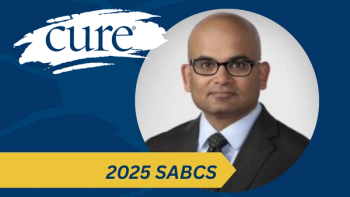
Prostate Cancer Symptoms Can Be Managed Years After Treatment
An expert on urological side effects of cancer treatments most often associated with prostate cancer discusses options, even for those decades past initial treatment.
Patients experiencing sexual or urinary incontinence as a result of cancer treatment can still seek effective side effect management long after their original treatment has concluded, according to an expert.
Dr. Petar Bajic, urologist at the Cleveland Clinic, emphasized the commonality of these symptoms and encouraged affected patients to speak to their primary care provider or seek out a specialty urologist.
“It's really important that (patients) know if they had cancer treatment many, many years ago, and they’re still experiencing these issues, these are very treatable things. And it's important to see a urologist who is experienced in dealing with these issues to know what those options are.”
Bajic said that anyone experiencing these symptoms can speak to anyone on their care team or their regular doctor about exactly what they’re experiencing, and most urologists will have access to the appropriate care options for them.
Sexual Dysfunction Options
Sexual dysfunction covers erectile dysfunction (difficulty getting and/or maintaining an erection) as well as issues with sexual climax.
There are many options to treat erectile dysfunction, including:
- Medication
- Vacuum erection device (commonly known as a “penis pump”)
- Penile injection therapy
- Penile implant or penile prosthesis
The vacuum device and penile injection therapy each work to create or maintain an erection, but both have significant drawbacks on the user end and require medical oversight due to the risks they pose if used incorrectly. Bajic highlighted the penile implant as a quick outpatient procedure with a 90% satisfaction rate that is also “almost universally covered by insurance.”
He furthered cautioned that plasma injections or stem cell treatments have not demonstrated any meaningful benefits to treat erectile dysfunction. Another novel treatment, shockwave therapy or simply wave therapy, is not covered by insurance, and works to improve blood flow, but is not effective for nerve-related erectile dysfunction from cancer treatment.
“I think unfortunately, sometimes people fall victim to false advertising for these treatments. What I would say about these wave therapies is that there is strong evidence that radial wave therapy, which is the majority of the ones advertised out there, does not work really for anything… If you hear something that sounds too good to be true — ‘oh, come in, we'll do this wave therapy and you're going to be like you were when you were 18 years old’ — it's probably not true.”
Better Care Is Available If You Seek It Out
Bajic was clear that it does not matter how long ago a patient might have been seen for prostate cancer or subsequent side effects; doctors and urologists are better equipped to treat the quality-of-life side effects now, and information on treatment options for providers and patients alike is simply more accessible.
He urges patients experiencing these side effects to do their own research and self-advocate.
Getting a second opinion is encouraged, as “not every doctor out there, not every urologist, primary care doctor has all the tools and all the information available.”
“It's important for people to know that they can have their quality of life back—we can give them that back. They don't need to like wear diapers for the rest of their life. They don't need to wear dark pants in case they leak. We have effective treatments that have been proven by the test of time and they're out there.”
For more news on cancer updates, research and education, don’t forget to




